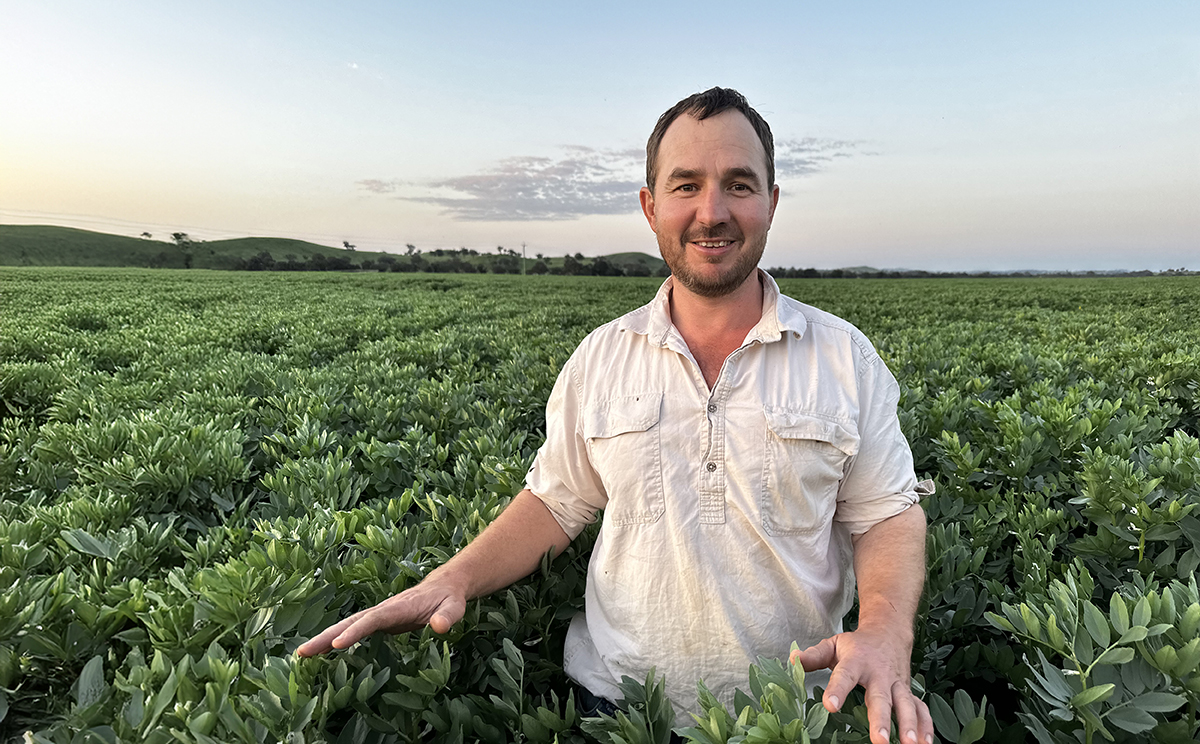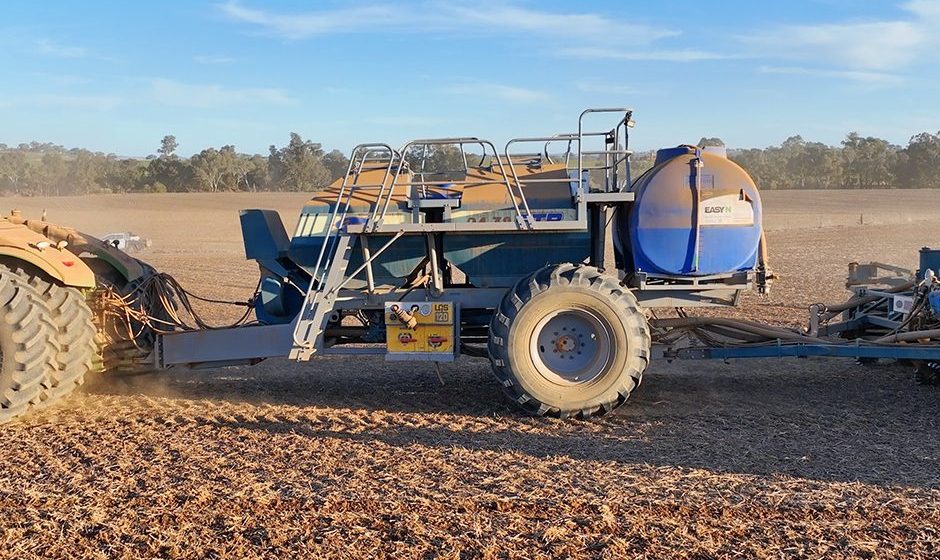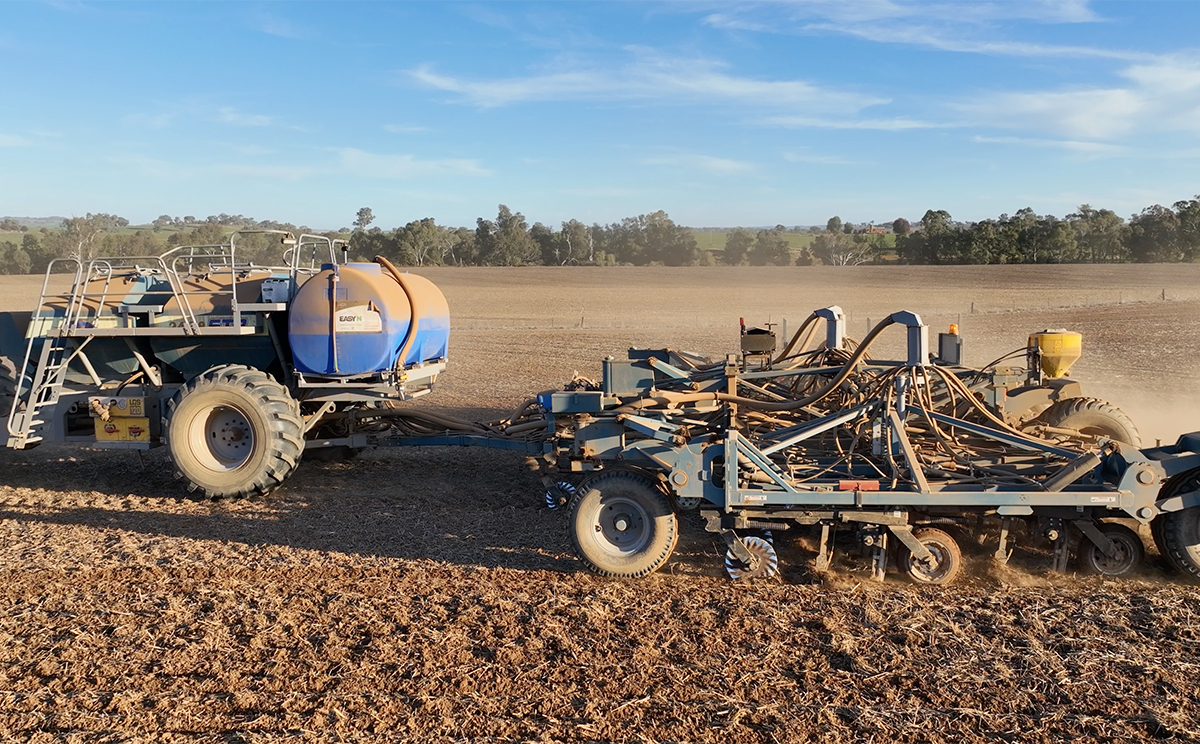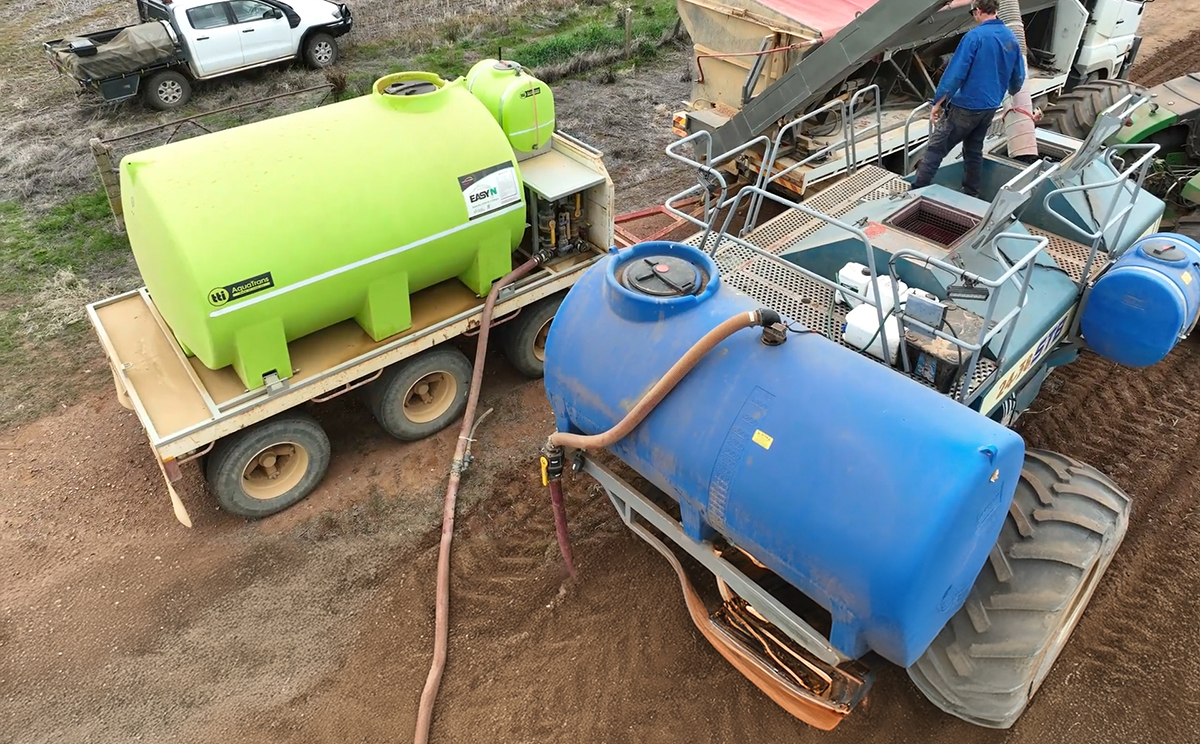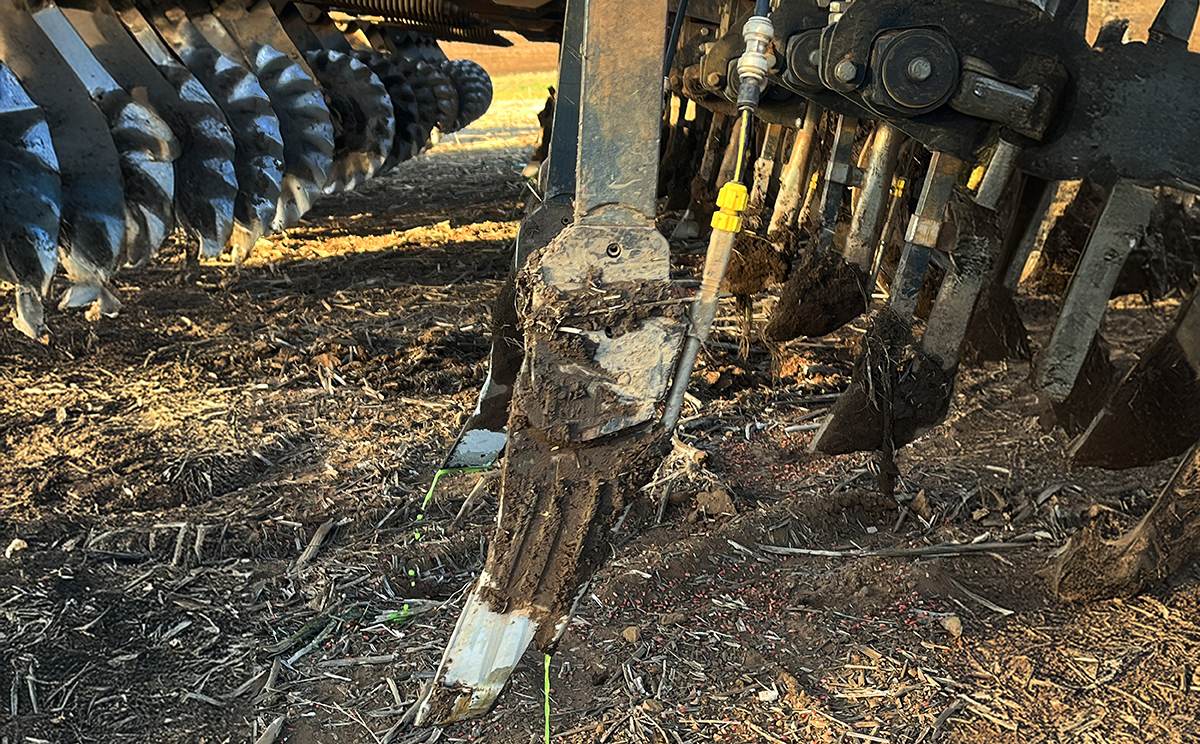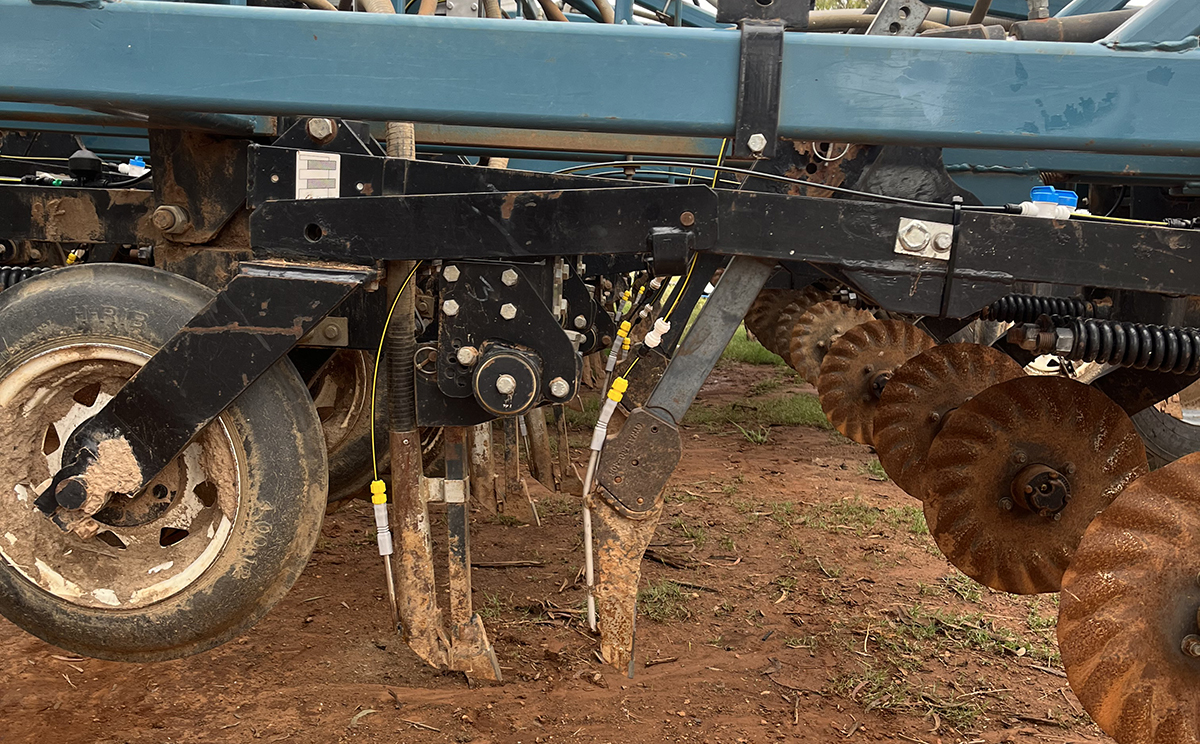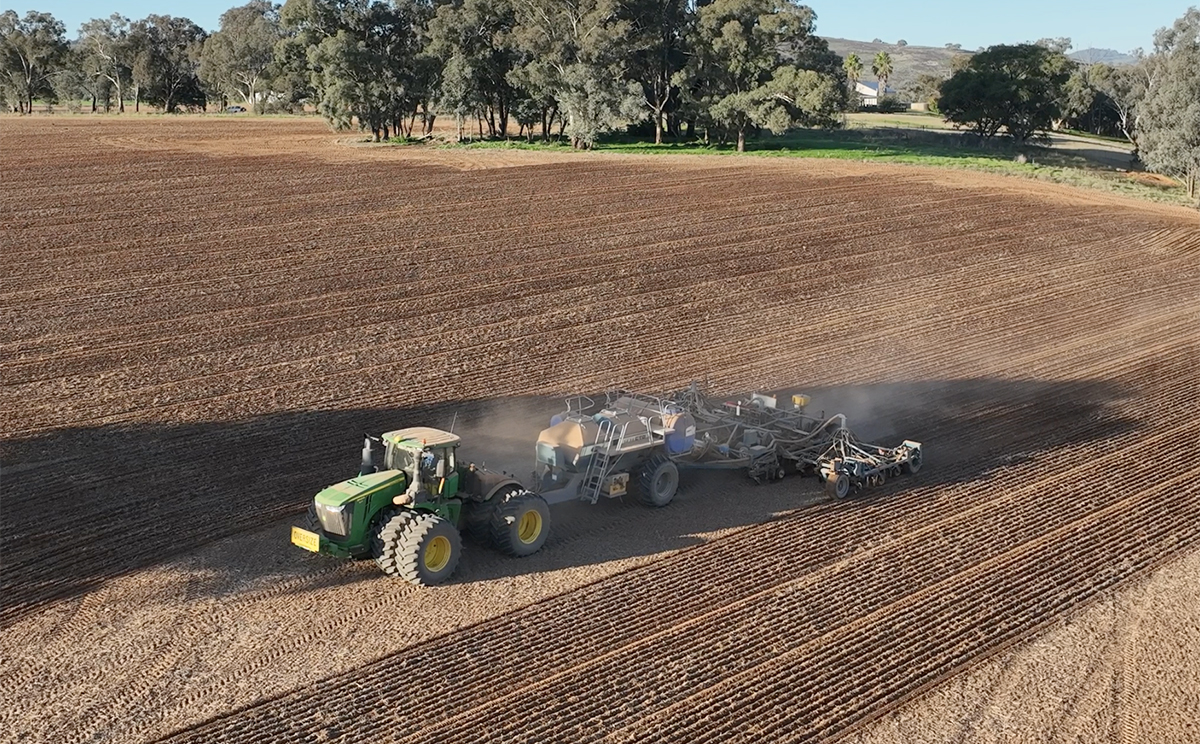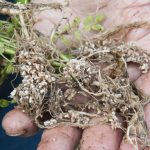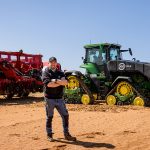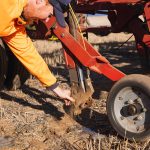Simplicity Meets Efficiency: Liquid Fertiliser System the perfect fit.
Switching to liquid fertilisers was a logical step for New South Wales mixed farmer Tom Johnstone when anhydrous ammonia supplies dried up, and it’s paid off with improved efficiencies and cost savings.
| ABOUT |
|---|
- WHO: Tom Johnstone
- LOCATION: Cowra, New South Wales
- INPUTS: 125 L/ha EASY N, 90 kg /ha MAP, Fungicides, Freeze Dried Inoculant. Trialling Bioactive Micronutrients.
- PROPERTY: 1600 ha mixed farming operation including 1200 ha mixed crops and 300 ha pasture, silage production, 200 cows and 1000 Aussie White sheep
- EQUIPMENT: Liquid Systems (SA) LQ120 Module, and 3 Manifold Section Control Stacker Kit with 42 LQS-ATST Outlets
| KEY OUTCOMES |
|---|
- Upgrading existing equipment delivered operational efficiencies
- Upfront nitrogen application and reduced nitrogen overlap
- Cost savings with on-farm storage and supply convenience
- Easier inoculation and greater fungicide flexibility
The Johnstone family had used anhydrous ammonia for around 40 years and faced overhauling their sowing equipment when the Brisbane manufacturing plant closed. Tom says moving to a liquid injection system made sense as their seeding equipment was essentially already set up for liquids.
“Our philosophy was to make the change easy; we didn’t want to make things harder. If we had shifted to using urea, we would have needed to buy a 2nd grouper and change the air cart – it would have been more expensive,” Tom said.
Tom farms with father, Peter, and his brother, Ben, near Cowra, NSW, where they grow a mix of cereals, canola, faba beans, and a combination of dryland and irrigated pasture and lucerne on 1600 hectares. They also run sheep and cattle, as well as a silage production enterprise.
Their shift to liquid injection started at the end of 2022 with the purchase of a Liquids Systems LQS120 pump module which they fitted to the side of their Gyral air cart. They also replaced their existing gas tank with a 4,800 L liquid tank which sits on the back of the air cart. A 10.6 m Gyral Sure Strike Planter, set up on 250 mm spacings and a 9420 John Deere tractor completes the Johnstone’s sowing gear.
After deciding to switch Tom found the installation fairly straightforward. “We already had the stainless tubes down the back of the primary tines and it was easy to take the gas tank off and put the liquid tank on.”
They also added a sectional control Stacker Kit which easily integrated into the rate controller – in a plug-and-play scenario, and runs through the main John Deere screen. Tom says it has not only performed well but has also delivered savings.
“It automatically cuts off when we get to a narrow headland so we can reduce nitrogen overlap and stop the crop from going down,” he said.
The Johnstone’s decision to invest in Liquid Systems equipment was primarily based on performance and customer service. After initially considering building a liquid injection system, the family decided against it after hearing of problems friends had experienced when trying to adapt squeeze pumps and other components to set up their own systems.
“I had heard positive things about Liquid Systems. It wasn’t the cheapest option but they offered a comprehensive guide for installation and had all the components we needed, along with good backup and support, which are important when you start a new system,” Tom explained.
Now into their second cropping season and with UAN replacing Big N, the family are pleased with their decision.
We like having the nitrogen up front -we get better efficiency than using urea and it’s easy to apply at sowing. With urea, you’re waiting for the weather front to come and then you fly out in front of it and you might get the rain you need and or might not.
In their first season, the Johnstone’s used a blanket rate of 100 L/ha of UAN along with 90 kg/ha of MAP but increased this to 125 L/ha in 2024 – a similar rate of N they previously applied with the gas.
“We were unsure of which rates to use and were guided by what the South Australians use. However, their rates are typically lower due to their soils. ”We have applied up to 150 L/ha and with no seed burn, partly due to having good separation with our primary tine.”
Tom likes the convenience and safety of using UAN and believes it is more efficient than Big N as it’s very stable and goes into the furrow well. As a result, the crops seem to germinate well and have shown good early growth.
Mixing fungicides such as Impact with EASY N is now part of their liquid application and provides more flexibility to tailor application rates compared to treating granular fertiliser.
“With the EASY N, we’re putting Impact Fungicide down. We found mixing them together is working really well. We can easily leave the fungicide out when we sow a crop that doesn’t need it like faba beans or if we are using a susceptible variety, we can increase the rate, so it’s great to get the flexibility. “ Tom said.
A move to using freeze-dried inoculants such as Easy Rhiz has also delivered time-saving benefits and overcome problems of using peat-based products, such as flow issues and blockages.
Using our liquid setup for inoculating is really easy, we use the same tank, the same pump, and even the same line meters. We simply turn taps off and on, so that the inoculant is sprayed onto the seed as it goes down the seeding tine. The freeze-dried powder is easy to use, you just add a bit of water and shake it up and stick them in the tank. The plants look great and there’s plenty of Nodulation.
They are also trialling bioactive trace element blends from Switch AG, that include micronutrients such as zinc and copper. They apply 5L/ha of Advance Promote and 3L /ha of Advance Energize and mix these with the UAN.
But at this stage, they are focused on keeping their system simple and not overcomplicating things with too many different products.
When setting up the Johnstone’s purchased four 30,000 L storage tanks for UAN, which Toms says gives them around three weeks supply at sowing time.
“When we started it was the middle of COVID, so supply was an issue- and having the product on hand was vital. Price-wise they were also cost-effective when compared to urea silos.”
This storage capacity allows them to purchase nitrogen when the price is good.
“It gives us flexibility to pick our purchase times so we are not such price takers. We can also get UAN whenever we want and we’re not waiting for anhydrous trailers to be delivered or topped up,” Tom explains.
At sowing time, a trailer with a UAN tank on the back is towed behind a twin-steer truck with the grouper carrying the seed and MAP. To make handling liquids quick and easy 3-inch suction hoses and fill pumps have been installed on everything so fertilisers tanks can be easily filled or emptied in three or four minutes.
“We also carry clean water tanks to flush out the lines every time we fill. It’s easy to switch over and pump the 3-inch line full of water and then drain the pipe back out. It means you don’t have to lift a full hose or dump urea on the ground.
Tom says the main advantages to adopting a liquid injection system was not having to overhaul their cropping system, and gaining more control over access to fertiliser.
We liked that we could keep using our narrow 13 mm knifepoints and we didn’t need to change the configuration of the seeding bar to accommodate rear air tubes. It’s just a tidy system and doesn’t create a lot of clutter on your bar.
Tom wouldn’t hesitate to recommend Liquid Systems’ equipment to other farmers.
“It’s a good system, that’s straightforward to install with everything you need, and the Liquid Systems team are there to help you out,” Tom said.
Get a Quote
"*" indicates required fields

